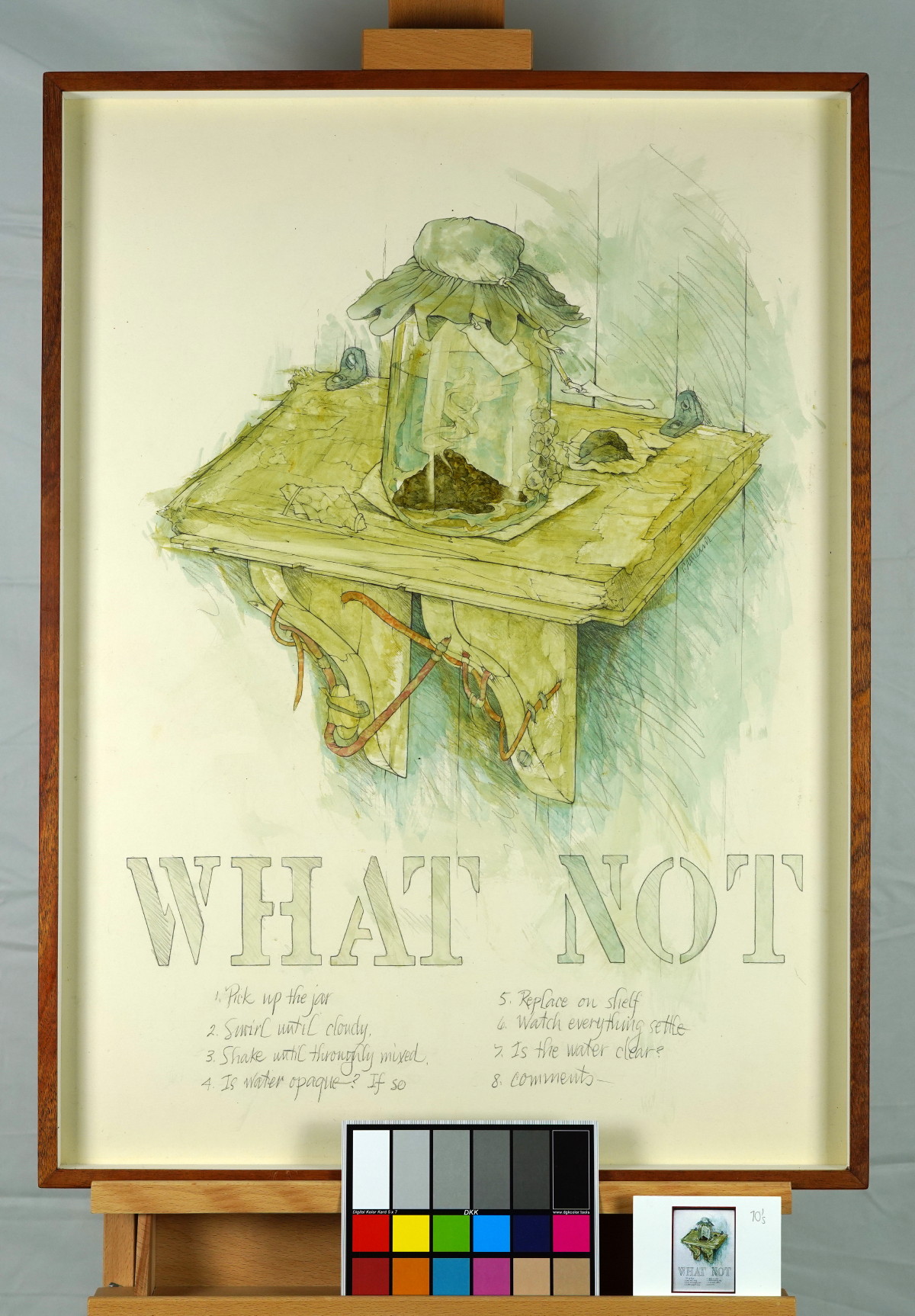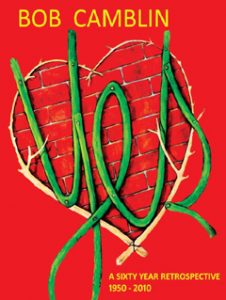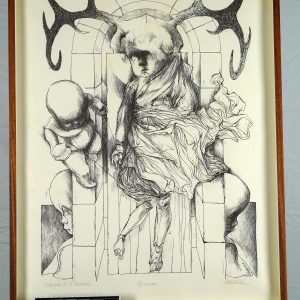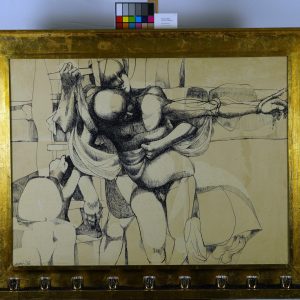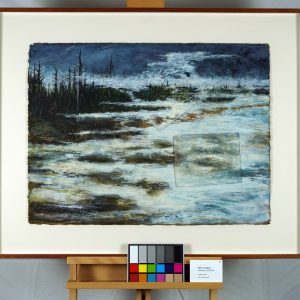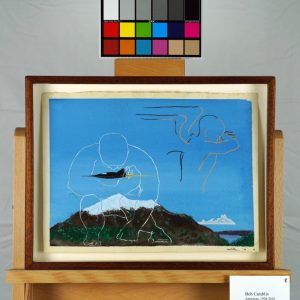Description
What Not, no datePencil/watercolor on paper
Signed
30.5 x 22.75 x 2 in. (frame)
original, includes certificate of authenticity from ArtTrust
The artwork titled “What Not” features a jar resting on a small wooden shelf with ornate brackets, evoking a sense of rustic charm. The jar is covered with a fabric lid, inside it appears to be various elements, possibly natural items or substances, whose forms are intentionally ambiguous. The text below the image serves as instructions for using the jar, reading: “Pick up the jar, swirl until cloudy, shake until thoroughly mixed…” suggesting an interactive or performative element to the piece. The interaction is not literal but rather mind play.
In the Zen tradition, the artwork could symbolize mindfulness in ordinary actions. The simple act of picking up and swirling the jar could be seen as a meditative practice, inviting the viewer to engage with everyday objects with attention and care. It encourages being present in even the mundane tasks, aligning with Zen’s emphasis on finding enlightenment in routine activities.
Considering the I Ching’s philosophy, the instructions in the artwork might evoke Hexagram 18, “Work on What Has Been Spoiled,” which deals with repairing, purifying, and making things clear again. The act of swirling and letting the water settle can be seen as a metaphor for addressing chaos or uncertainty, allowing impurities to settle out and clarity to emerge, suggesting a pathway from confusion to enlightenment.
The artwork plays on the dichotomy of interaction versus observation. The instructions invite the viewer to not just look, but to perform a sequence of actions, embodying an experiential dimension. By engaging with the jar, the viewer symbolically stirs up the sediment—metaphorically disturbing stagnant thoughts or perceptions—only to then wait for clarity to re-emerge.
The piece resonates with the spirit of conceptual and participatory art from the 20th century. Artists like Joseph Beuys and Yoko Ono, who blurred the lines between object and action, come to mind. The rustic aesthetics and the idea of everyday materials being used in an artistic context also harken back to Arte Povera, which emphasized simplicity and rawness in materials.
The combination of text, object depiction, and instructions creates a blend of visual art and poetry, inviting both contemplation and action from the viewer. This multidimensional approach expands the meaning and impact of the piece, encouraging interpretations on various levels.
*Shipping cost will vary, please inquire at sales@camblingallery.com before purchasing.
Currently ships from Oregon, USA
Member of artnet? Apply for a discount! Inquire about intergallery and permanent loans for museums.
“What Not” was featured in his Yes Retrospective
Reproductions of this drawing are available in multiple sizes!
Click here to use our high-resolution viewer!
This artwork is available with a non-fungible token to ensure traceability and transparency of provenance.
The royalty factor – Unlike traditional artworks, such as paintings, mosaics, statues, and the like, NFTs can be programmed to provide royalties to you every time the painting (and token) is sold and resold – for eternity. That mind-bending Camblin you sold could be worth millions one day and provide income for your great-great-great grandkids!
Anti-forgery – The central idea underpinning NFTs is that they are built on the blockchain, which is meant to offer advanced security. Think of it like an un-erasable and un-avoidable copyright.
Easy authentication – Another compelling aspect of NFT art and NFTs in general is the ability to quickly and easily authenticate items, as the record of ownership is scrupulously kept on the blockchain.
